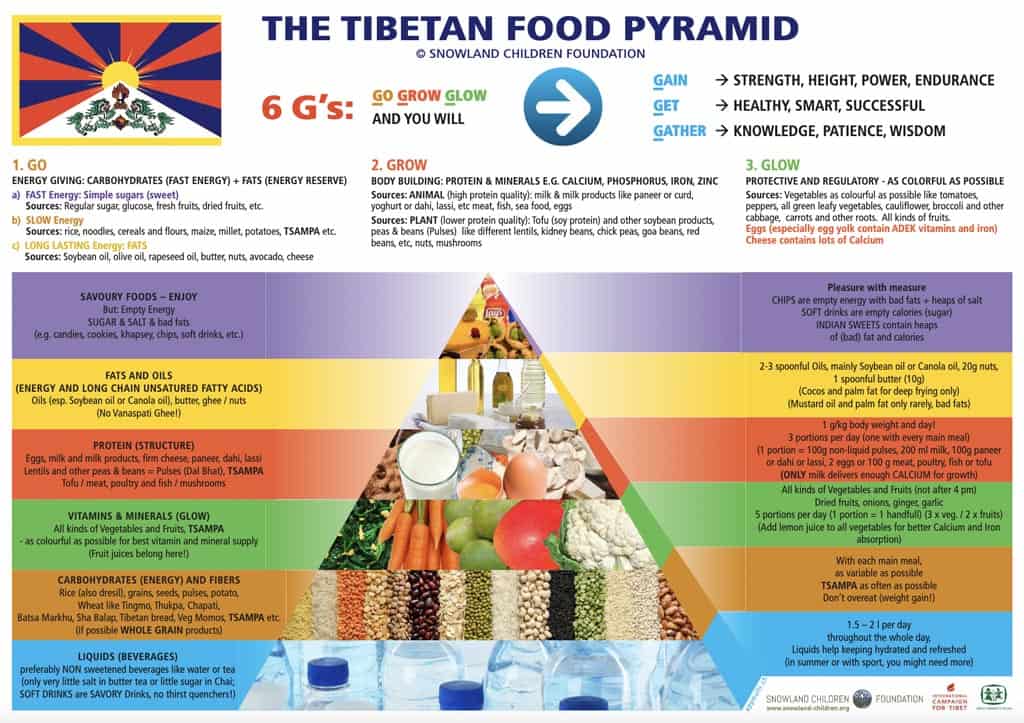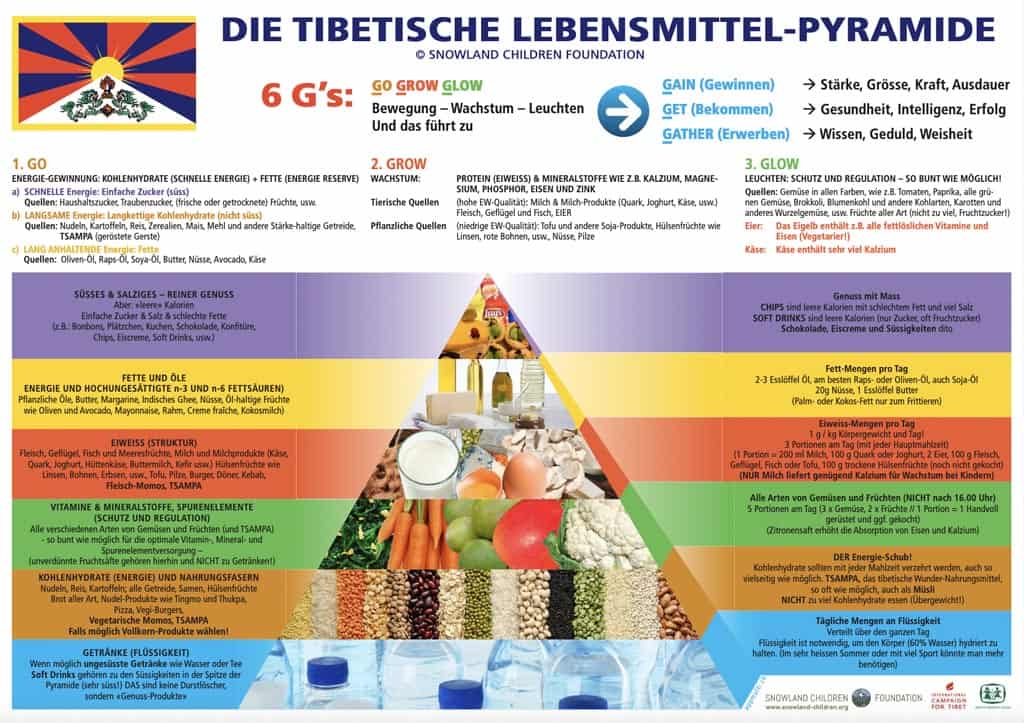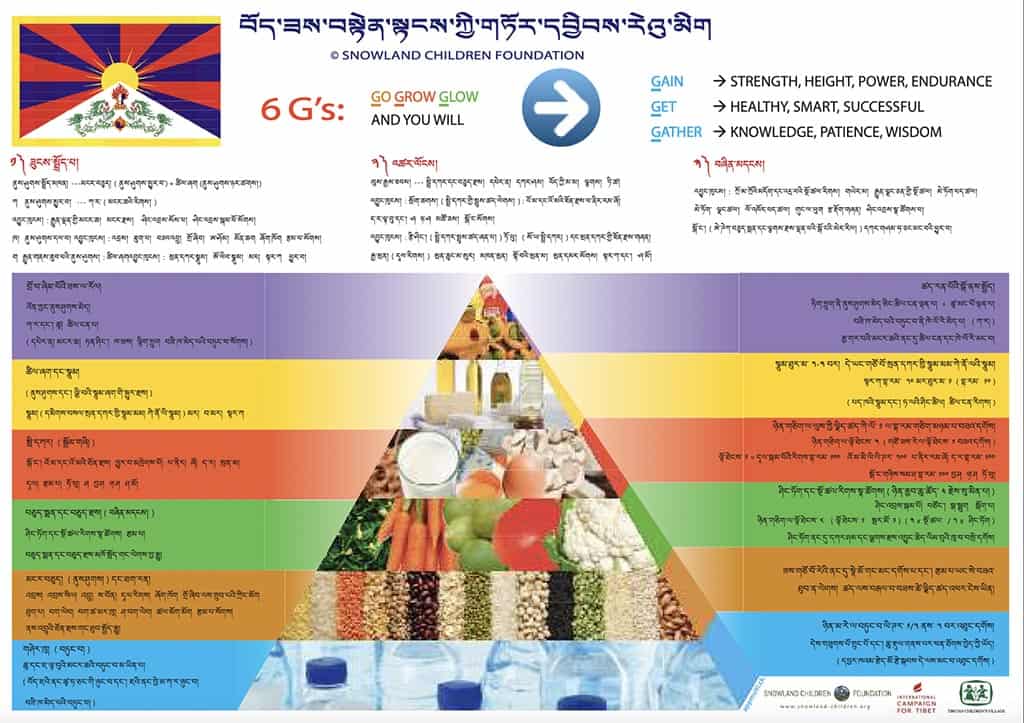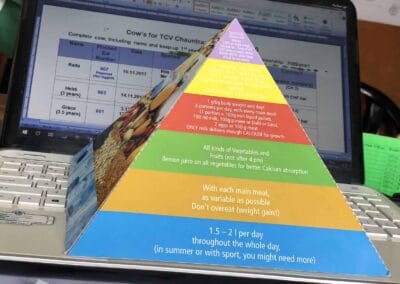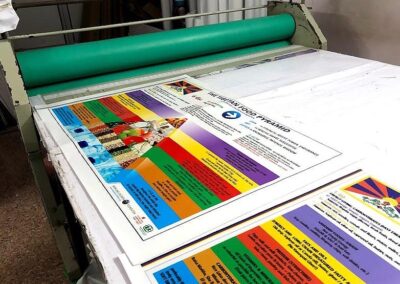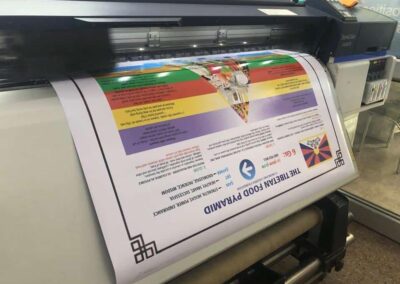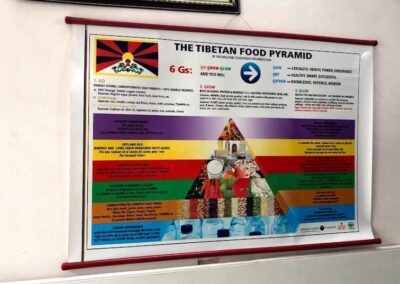The Tibetan Food Pyramid
(Copyright: Snowland Children Foundation)
The pyramid in English as PDF:
Pyramide-A3-english.pdf
The 8-page brochure explains the pyramid in detail
Background
During the last nutrition trainings in 2019, it had become increasingly clear that neither the Swiss Food Pyramid nor the Indian Pyramid fit the diet in Tibetan Children’s Villages (TCVs):
- Swiss pyramid
In Switzerland, milk and dairy products are recommended 5 times a day. This is not only completely unrealistic for the situation in the TCVs, but also not necessary overall (not even in Switzerland). We can be happy if one day we reach the goal of being able to offer 1 glass of milk with 200 ml per day.Another problematic point was that the first food level (after the liquid level) is the green “fruits and vegetables level” and only then comes the brown level with the “satiety side dishes” (cereals, potatoes, bread and rice). This also does not correspond to reality in the Tibetan diet, but it also does not correspond to reality overall in the world’s diet.Indische Pyramide - There are several points here that we did not like in the working group:
– No liquids as the lowest level
– The lowest food level is divided into (exclusively) whole grain products and vegetable oils. Oils do not belong in the group of the most recommended products, but in the fourth level (below the top with the “Savory” pleasure products.
– For this, all finely milled cereal prdoucts AND even potatoes are found in the top with the savory products. Of course, it would be desirable to choose only whole grain products as satiety side dishes, but it is completely unrealistic. And – potatoes belong with the Tibetans to vegetables and have certainly nothing with “pleasure means” to look for.Here are several points that we did not like in the working group:
– No liquids as the lowest level.
– The lowest food level is divided into (exclusively) whole grain products and vegetable oils. Oils do not belong in the group of the most recommended products, but in the fourth level (below the top with the “Savory” pleasure products.
– For this, all finely milled cereal prdoucts AND even potatoes are found in the top with the savory products. Of course, it would be desirable to choose only whole grain products as satiety side dishes, but it is completely unrealistic. And – potatoes belong with the Tibetans to vegetables and have certainly nothing with “pleasure means” to look for.
– Dairy products are found (which is good) in the second-upper level and are recommended 1 to 2 times a day (which would make sense), but – multivitamin “tablets” are also recommended for “most people” and calcium supplements for those who do not drink milk. While this would also be desirable for TCV kids, it is completely unrealistic (for cost reasons) and is not recommended anywhere else in the world in any food pyramid.Thus, we decided to design a Tibetan Food Pyramid, which should emphasize specific Tibetan products such as TSAMPA (roasted barley flour), but also other specialties such as MOMOs and dried fruits.
The pyramid in German as a PDF:
Pyramide-A3-deutsch.pdf
The 8-page brochure explains the pyramid in detail
Working group:
Dr. Bianca-Maria Exl-Preysch (= myself, President of the Board of the Snowland Children Foundation) with the Science Council of TCV Chauntra and Mrs. Kalsang Sharling, Tibetan Nutrition Consultant and former Director of the “Mother’s Training Center” of all 8 TCVs
We had still formed a working group in TCV Chauntra in 2019. This was advantageous because I am often in TCV Chauntra to check on Snowland Farm (see there), but also because Mrs. Kalsang Sharling lives in the immediate vicinity.
With CORONA, things turned out differently than planned: We could no longer meet and had to do all the coordination in writing. It was impressive how well the cooperation worked out after all and by the end of 2020 we had completed the original version in English!
The Science Council and Mrs. Sharling had organized another whole week of projects to “put the finishing touches” on the pyramid.
Now “only” the translation into Tibetan and German was in front of us. We had decided to do a Tibetan translation because the older housemothers do not speak English well, but also because we wanted to offer the pyramid in the future to the CTA (Tibetan government in exile in Dharamsala) but also to newly arrived Tibetans in Germany, Switzerland and Austria. The translation was done by a member of the TCA and Mrs. Sharling checked the text.
The German translation, which we want to offer to Tibetans in Switzerland, Germany and Austria, I did myself.
In the spring of 2021, we printed the pyramid in the 3 languages. In India, the Tibetan and English versions were printed in different sizes for the 8 TCVs. In Switzerland we had enough copies printed in English, German and in Tibetan.
Funding
Again, the ICT (International Campaign for Tibet, Germany) kindly supported us. The Snowland Children Foundation itself has also made a financial contribution (in addition to the personal commitment of the president).
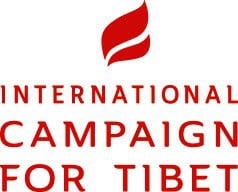
The pyramid in Tibetan as PDF:
Pyramide-A3-tibetisch.pdf
The 8-page brochure explains the pyramid in detail
Text – brochure for the Tibetan Food Pyramid. — TIBETAN final
Application and use of the food pyramid
A food pyramid is intended to be an easy-to-use means of eating a balanced diet in the context of local eating habits. Therefore, in most countries of the world there are such local pyramids, which just take into account the respective national customs in the diet and THEREFORE recommend a balanced diet.
The lowest level
This level does not actually consist of food yet, but of fluid intake. Most countries have added this level to make it clear that liquid is the most important thing in the diet. We just showed water – unlike many other pyramids. We used water bottles because in Asia, unfortunately, you can ONLY drink good water from bottles (bottled water).
First food level, i.e. 2nd level in total: BROWN – satiating carbohydrates and dietary fibers.
Here are the foods that you need 3 times a day as a source of energy at all meals, and which are also sometimes called “satiety side dishes”. Here we have shown in picture form the most important carbohydrate suppliers in a mostly vegetarian diet: This goes from cereal grains and rice to all kinds of lentils and other legumes.
We then referred to this again in the protein level, since legumes are the main sources of protein in the vegetarian diet (along with eggs and milk).
The 3rd level: Green: As the third most common foods come vegetables and fruits, which should also not be missing from any meal, preferably as colorful as possible to cover a sufficiently wide range of vitamins, minerals and trace elements.
The 4th level: RED: Proteins for structural application.
They consist of eggs and milk, little meat (Tibetans actually eat meat even as Buddhists, but in the TCVs there is no meat for cost and hygienic reasons (no refrigerators!!!)) and vegetarians mainly from legumes (lentils and Co.). Protein is of course very important at the age of growth (TCV kids) (structure-building) but later again at the age (structure-degradation, i.e. maintaining the structures as long as possible). Clever combinations of different protein sources (e.g. rice and lentils) can ensure that the quality (biological value) is improved and the required quantity can be reduced.
The yellow level: second-highest level of fats and oils.
On the one hand, these are sources with a high energy density (more than twice as many calories per gram as carbohydrates and protein). On the other hand, they contain the vital highly unsaturated fatty acids (so-called “omega fats” or “n-3 fats”). The Tibetan diet consists mainly of vegetable fats (oils), so that sufficient n-3 fatty acids are generally supplied (soybean oil or rapeseed oil).
The tip: purple
Finally comes the “top of the pyramid”: Here are the “pleasure products” that you would not actually need in your diet, but which offer great pleasure in terms of taste: It is pure pleasure, sweet or salty and should also be consumed as such – pleasure with moderation – because they are usually very high in calories and provide little or no important vitamins, minerals, sputenelements, etc..
Design
There are many different options here: Some pyramids have stylized foods, some have images of the most commonly consumed foods. We have chosen to use real images, but not an accumulation of different products, but rather a compilation of the most important sources of each level/group

